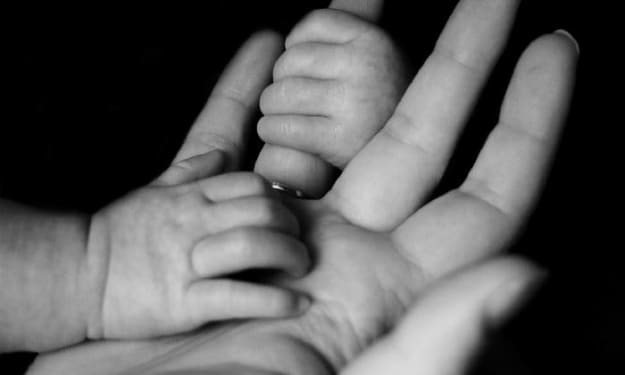I Taught a Student Who Killed Himself
Children deserve respect and need support

The recent shooting in Nashville has me thinking about my career as an administrator in public education. For years educators have sounded the alarms about violent and potentially harmful students in the schools. The responses vary from year to year, state to state, school to school, and child to child. No consistent response exists to increase safety.
In fact, during my years in the profession, there have been numerous events that have required contact with local police authorities along with Health and Welfare. Too often our concerns met a common refrain, “There is nothing we can do.”
On one level, I understand. Should a teen be incarcerated because he made a threat? Should a youth be placed on a mental health hold for counseling because of a blurted statement? If either response remained consistent to all student comments, institutions would be full and lawsuits from parents would increase exponentially. In these cases, potential hurdles are inconvenient but real.
Limited space prohibits either of these options. In Idaho, my state of residence, there is already a shortage of institutions and people to provide interventions for youth. Note: Idaho also does not have a Red Flag Law.
Adequate money is not allocated to offer support and even though it is difficult to admit, somebody must pay to make resources available.
With the different interpretations of events educators, parents, legislatures, law enforcement, etc., cannot agree about when a threat becomes a concern.
Real-life scenario
A young boy, who we will call Bob, repeatedly threatened to harm peers so a plan was created that required he be accompanied by an adult escort whenever on campus. When he entered the building, he was searched, and all personal supplies were kept in the classroom to eliminate the need for a backpack. When searched he had been found carrying a razor, a house key sharpened to a point, and other objects that could pose a threat. Bob was also on a daily point sheet and a behavior contract.
He bragged about the guns in his home and claimed to have access to several. During a conference with the student, parents, teachers, security, and counselors, a threat assessment was conducted. At the end of the meeting, it was determined that guns are in the home, they are usually locked but not always, the boy was home alone until his parents arrive after work, and police had been called to the house due to violence.
Numerous options were considered and discussed.
Expulsion — No illicit actions occurred that created an infraction at the level of expulsion. Expulsion did not eliminate the threat. If expelled, Bob would be at home unsupervised for extended periods of the day.
Incarceration — Legally, no laws were broken, and a court would not uphold a decision of this nature. There were no open beds in any youth mental health facilities and if there were, there was no means to pay the expense.
Mental health resources — Bob received private counseling, PSR support workers spent several hours each week in activities, and he regularly visited a medical physician who monitored medications.
The sad reality is though everyone wanted to support Bob, constant conflicts placed a wedge between everyone involved. Mental health issues cause pain to anyone associated with the situation.
Bob did not live to be a mass shooter. Instead, at the age of 16, he took his own life.
When news of a mass shooting comes across my screen, a chill freezes my heart. Many students who have crossed my path needed support — too many. In some cases, the system let them down, but even with the best of intentions resources remained limited. When I read a headline or hear a statement accusing a school of not identifying a student as a potential threat, I want to yell, “We did identify him!”
Annually, hundreds, no thousands, of youth are identified as at-risk. The suggestions to implement interventions too often are met with closed doors. Either parents do not recognize a problem and without parent support schools’ options are limited. Law enforcement is overwhelmed. There are no appropriate remedies available in the court systems. Mental health facilities are at capacity. Answers are elusive.
Yes, on one level I understand that there is a thin line between creating a safe environment and taking away a person’s rights, but I also realize the consequences of not sounding the alarm. However, no matter how loud the siren sounds, how often distress signals are encountered, and how many warning signs exist, without resources educators’ hands are tied.
Many times writing allowed me to process my thoughts and emotions about situations in my school. This poem emerged after a safety assessment meeting discussing “Bob”.
Through the Eyes of a Child
We sat in the damn meeting for two hours
They asked questions and answered all
themselves
Called it a safety inventory
I’m not even sure why I had to be there
My old man showed up late
but at least he showed up this time
Looking his best in grease-stained coveralls
with grease under his fingernails
What did they expect?
Does he talk about hurting himself?
Check
Has he ever mentioned suicide?
Check
They talk like I am not in the room
Are there weapons in the home?|
Check
Are they inaccessible — out of reach or locked?
Check
Has he ever brought a weapon to school?
Keys with one filed to a sharp point
He carries a ring of keys
Has an affinity to sharp objects
He likes to cut things up
Can you give an example?
Clothing, coats, blankets, sheets
What do the keys unlock?
Front door, shed. . . gun safe
Do you feel threatened at home?
No. But we had to call the cops last week
They did ask me one question
Who is your hero?
Hitler
Why?
He was a smart man
Does this team feel Wolf is a safety threat?
Check
To himself or others?
All the above
____________________________________________________
This document shares a threat assessment I wrote to use in our school.
Arguments rage about how to protect our children. They will continue because society cannot agree: gun control? mental health? interventions?
I don’t know.
What I do believe is that until we begin to try to understand America’s Youth, we will never understand the problem of gun violence.
After 34 years of teaching, I gathered all my writings about students into one book. Like the poem above, each shares an individual’s story through their own words. This is what I think they would want to say if anyone was listening.
____________________________________________________
If you wish to read their stories, they are available on Amazon.
About the Creator
Brenda Mahler
Travel
Writing Lessons
Memoirs
Poetry
Books AVAILABLE ON AMAZON.
* Lockers Speak: Voices from America's Youth
* Understanding the Power Not Yet shares Kari’s story following a stroke at 33.
* Live a Satisfying Life By Doing it Doggy Style explains how humans can life to the fullest.






Comments
There are no comments for this story
Be the first to respond and start the conversation.